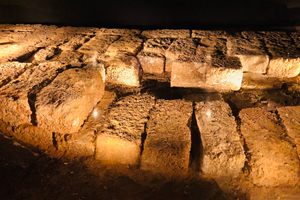About
Following the overthrow of King Otto I of Greece in 1862, the Greek National Assembly selected 17-year-old Prince William of Denmark as their new king. Since his enthronement under the regal name, King George I in 1863, the country experienced territorial expansion and prosperity which resulted in increased popularity for the monarchy. This popularity decreased significantly upon the start of the Greco-Turkish War of 1897. The war proved George had the country unprepared and his popularity virtually vanished upon Greece’s defeat.
Shortly after the end of the war, George was traveling in an open carriage with his daughter Princess Maria when there was an assassination attempt. During this attempt, George appeared to show no regard for his own safety and shielded Maria from a volley of bullets from two shooters armed with rifles. This display of bravery made George so popular that it prompted Athens Mayor, Spiros Mercouri to lobby the rest of the city government to build a church at the site of the assassination attempt to honor his bravery.
Mercouri was made aware Greece was participating in the 1900 Paris Exposition with a Pavilion that showcased a large Byzantine church surrounded by Greek ruins. He made arrangements to have the church shipped back to Greece after the end of its seven-month run in Paris. In the interim, Mercouri had a stone foundation laid at the site of the assassination attempt. After the end of the Paris Exposition, the 150-ton church was dismantled, brought to Athens, and reassembled block by block on the stone foundation.
The church is octagonal in shape, with a large crossed dome inscribed by pink and blue tiles on the exterior. The dome, doorways, and window openings were all supported by decorative wrought iron arches and pillars. It was named after Agios Sostis (Christ the Holy Savior) in honor of the king and the princess who were “saved” from the assassin's bullets.
Related Tags
Know Before You Go
The church is open sporadically during the week, holds liturgy every Sunday, and celebrates feasts annually on August 6 (Transfiguration of the Savior) and September 7 (Saint Martyr Sozontos).
Dress codes vary from church to church in Greek Orthodoxy. If you wish to enter the church, a proper show of respect to the church and its members is achieved by modest clothing and proper behavior. For men, shorts, tank tops/sleeveless shirts, and sandals/flip flops are frowned upon. Women's shoulders should not be shown inside the church, so anything strapless or with thin straps should be avoided. Skirts and dresses should at a minimum come below the knee. Some churches ask that no leg be shown.
Feet should be kept on the ground when seated, as is considered insulting for feet to face holy images.
Community Contributors
Added By
Published
September 18, 2021















































